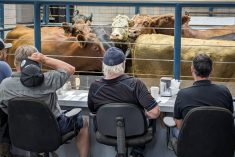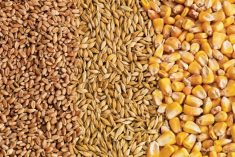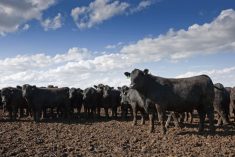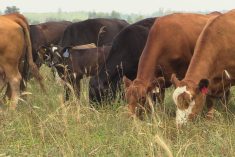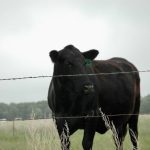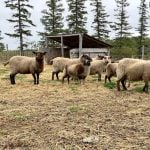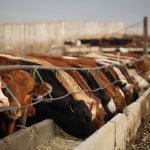Compared to last week, western Canadian yearling markets were $4 on either side of unchanged and the market was quite variable across the Prairies. Strength was noted early in the week but feedlot operators pulled in the reins on Thursday and Friday. Strength in the barley market along with lower feeder cattle prices south of the border set a negative tone. Buyers’ remorse was setting in on early purchases. Many auction barns will have feature yearling sales over the next couple of weeks. The aggressive sentiment from previous weeks appears to have evaporated as buyers take a wait-and-see attitude. Margins are hovering in negative territory and feedlot operators want confirmation of stronger fed cattle prices before extending ownership.
Read Also

U.S. grains: CBOT soybeans, corn, wheat fall in USDA data aftermath
Chicago grains took a dive on Friday, following a closely watched U.S. government crop report and the release of export data that could provide clues into Chinese buying.
Larger-frame lower-flesh Simmental mixed steers averaging just over 1,000 lbs. were quoted at $188 landed in the Lethbridge area; larger-frame tan mixed heifers weighing 950 lbs. were quoted at $186 in the same area. In central Alberta, larger-frame 925-lb. steers traded for $194 while 910-lb. black mixed heifers were quoted at $178.
Calf volumes remain very light despite much of Western Canada receiving less than 40 per cent of normal precipitation over the past 30 days. Forage supplies will be relatively tight in Saskatchewan and cow-calf operators will sell cattle rather than buy feed over the winter. Mixed steers averaging 550 lbs. were quoted at $242 in southern Alberta while mixed heifers averaging 525 lbs. were valued at $222. In central Alberta, mixed steers averaging 675 lbs. traded for $214 and heifers weighing 670 lbs. were quoted at $203.
The barley market is surprisingly strong as harvest moves into full gear across Western Canada. Grain traders are anticipating a sharp year-over-year increase in offshore movement due to lower production in Australia, Russia, Ukraine and the European Union. A fair amount of corn is trading into southern Alberta and this will continue throughout the crop year. World barley and corn stocks will be fairly snug by the end of the 2018-19 crop year.
— Jerry Klassen manages the Canadian office of Swiss-based grain trader GAP SA Grains and Produits Ltd. and is president and founder of Resilient Capital, specializing in proprietary commodity futures trading and market analysis. Jerry consults with feedlots on risk management and writes a weekly cattle market commentary. He can be reached at 204-504-8339.






